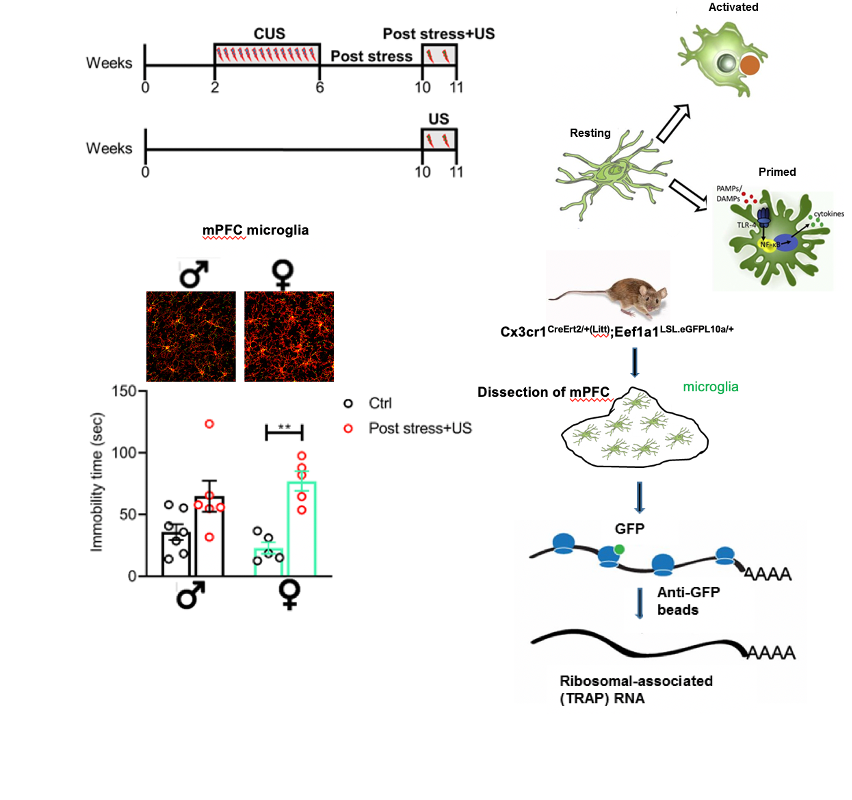 The incidence and prevalence of depression are higher in women than in men, but the cause of this sex difference remains elusive. Our study implicates that over-activated microglia play a crucial role in depression and suggest mPFC microglia associate with the sex difference in the sensitivity to depressive-like behaviors. Both male and female mice are subjected to 7 days of sub-threshold unpredictable stress (US) or to chronic unpredictable mild stress (CUS) for 4 weeks, followed by 4 weeks of post stress rest and subsequent exposure to US (post stress+US). Behavioral tests are performed to evaluate depressive-like phenotypes, while several microglia-related biomarkers including the activation marker, CD68, microglia morphology and neurotrophic factors in mPFC are detected to analyze sex difference. We found that US exposure provoked a depression-like behavior in female but not in male mice, that was accompanied by shifting of the microglia towards hyper activation. We observed that the expressions of the DAMP’s and their receptor TLR4 in mPFC increased greater in female compared to male mice when facing stress stimulations. Furthermore, we are using a microglia-specific translating ribosome affinity purification (TRAP) approach for region-specific analysis of microglia-enriched mRNA expression to further characterize the sex differences in the microglia response to CUS, and using the CRE-LOX mice to study the involvement of the DAMP-TLR4-dependent pathway in the depressive-like behaviors.
The incidence and prevalence of depression are higher in women than in men, but the cause of this sex difference remains elusive. Our study implicates that over-activated microglia play a crucial role in depression and suggest mPFC microglia associate with the sex difference in the sensitivity to depressive-like behaviors. Both male and female mice are subjected to 7 days of sub-threshold unpredictable stress (US) or to chronic unpredictable mild stress (CUS) for 4 weeks, followed by 4 weeks of post stress rest and subsequent exposure to US (post stress+US). Behavioral tests are performed to evaluate depressive-like phenotypes, while several microglia-related biomarkers including the activation marker, CD68, microglia morphology and neurotrophic factors in mPFC are detected to analyze sex difference. We found that US exposure provoked a depression-like behavior in female but not in male mice, that was accompanied by shifting of the microglia towards hyper activation. We observed that the expressions of the DAMP’s and their receptor TLR4 in mPFC increased greater in female compared to male mice when facing stress stimulations. Furthermore, we are using a microglia-specific translating ribosome affinity purification (TRAP) approach for region-specific analysis of microglia-enriched mRNA expression to further characterize the sex differences in the microglia response to CUS, and using the CRE-LOX mice to study the involvement of the DAMP-TLR4-dependent pathway in the depressive-like behaviors.
